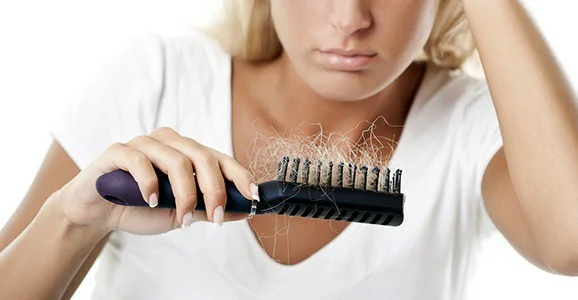Too messy for your own comfort? Stray hairs everywhere? On your pillows, on the bathroom countertops, on your work desk, on the shower drain? It’s definitely an annoying sight and it can also be a sign of an even bigger health problem. Most of the time, finding a few strands of loose hair in your wake is okay, in fact, that is entirely normal. But what happens when your occasional shedding has turned into a full-blown hair loss? Below are some of the facts about hair loss and how it can be treated.
What are the common causes of hair loss?
There is no single answer to this question as hair shedding can be a result of a number of factors. Heat damage can cause the hair strands to break, ergo the constant use of curling irons, blow dryers and flat irons can attribute to you having excessive hair shedding. Same can be said for frequent hair coloring and hair extensions. Stress can also be a big factor as well as the food you eat.
For you to have stronger hair strands, you need to be eating a lot of protein and vitamins. Protein energizes your hair follicles making them healthier in the process and less prone to breaking. Metabolically, an over stimulated thyroid can also result to hair loss.
So much hair shedding is considered normal?
An average human head has about 100-150 thousand strands of hair on it. Shedding about 30-50 strands a day is okay, however, losing about 150 strands daily is a no-go and warrants a visit to a doctor.
Are there certain types of hair that sheds more than the others?
Curly haired girls are more prone to shedding than people who have thin hair. This is for the simple fact that women who have curly tresses are more prone to subjecting themselves to the use of hair tools that uses heat in them in order to straighten their hair. Again, heat tools can be very damaging to hair follicles because it dries them up of moisture which leaves the hair shaft all brittle, flaky and fragile.
What can be the signs of healthy hair follicles?
To know if your hair follicles are healthy or not, better check the texture of your tresses. Do this by getting two or more mirrors and examining the hair located at the back center patch of your head, otherwise known as the occipital protruberance. This is the natural bump in your head and this is where you should check your hair for texture change. Theoretically, the hair in this area should not change in texture. So, if you found that there’s a mismatch between your hair in this area and the hair you have within the rest of your head, then you can go see a doctor.
The hair has something like a four to six months memory, meaning, if something goes wrong, you won’t be seeing any immediate trauma, except after maybe six months. Another trick to check if your follicles are healthy is to scout the root of the fallen hair for a club-shaped bulb. If it has one, it’s an indication that the strand has gone through its entire life cycle and is thus a product of normal shedding.
What can be done to avoid hair loss aside from skipping hot hair tools?
Any changes in the body’s thyroid function can affect the way you shed hair. Try avoiding soy products as it has been known to affect the thyroid functions of a lot of people. Ensure that you have enough B vitamins and load up on iron and protein in your diet to promote healthy hair strands as well as nails.
